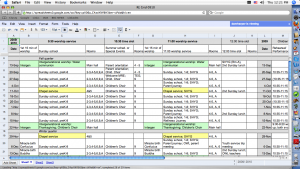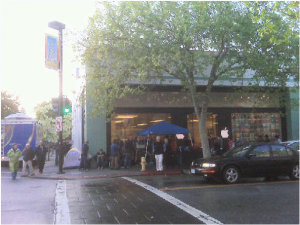Out here in the Bay area, we are used to people who alter Barbie in various ways. After all, San Francisco is the home of the Altered Barbie art show and artist community. But now even the Washington Post has picked up on the altered Barbie trend.
Astute reader E sent along a link to a Post article about Episcopal priest Barbie. The article links to Rev. Ms. Barbie’s Facebook page, which is priceless not just for the beautiful fashion photos showing Ms. Barbie with surplice, cassock, thurible, etc., but also for the many comments, some of which are admiring and some of which are entirely disapproving. The Post also links to an earlier Religion News Online article, which had the headline “Barbie gets ordained and has the smells-and-bells wardrobe to match.” Excuse me, bub, that’s Rev. Ms. Barbie to you. And there’s a link to Unitarian Universalist blogger Peacebang’s “Beauty Tips for Ministers,” who has already posted on Episcopal Priest Barbie.
I note that Rev. Ms. Julie Blake Fisher, the maker of Episcopal Priest Barbie, lives in the midwest, proving yet again that the midwest, not the coasts, is the home of the most subversive craftspeople in the U.S. There are rumors that a midwestern craftsperson is even now working on a similar project for Unitarian Universalist ministers: Rev. Mr. Sock Monkey.
Update: Blogging at Blag Hag, Jen McCreight, a “a liberal, geeky, nerdy, scientific, perverted atheist feminist trapped in Indiana,” has created Atheist Barbie, who wears a Flying Spaghetti Monster necklace. Apparently BoingBoing even picked up on McCreight’s post, which means she probably exceeded her bandwidth limitations this month. I just want to say that from my point of view, a Flying Spaghetti Monster necklace does much more for an outfit than a thurible; accessories really do make the outfit. Did I mention McCreight was from the midwest?


